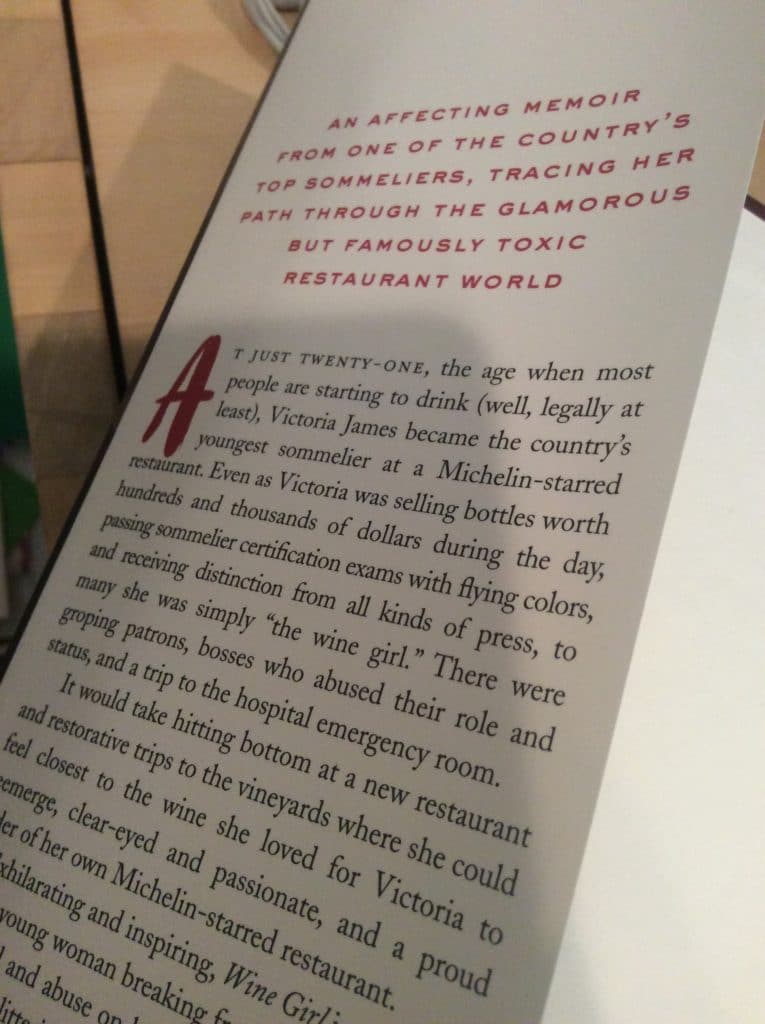
Every industry has a dark side. Something that happens with a falling regularity that only occasionally bubbles to the surface. It can be bribes, unequal pay, sexism but all seem to have a wellspring of people taking advantage of other people.
Wine Girl by Victoria James shows how wine and high-end restaurants has its own “grease trap” as it were that could have and should have broken the author but by the end of the book, you will be amazed at her strength and resilience in life and in wine.
I cannot imagine being verbally belittled with the nickname Wine Girl or to be not believed as a professional by men who seem to only be able to allow other men to have and hold power. But James has been physically assaulted in ways that made my blood boil and forced me to put the book down because I was so angry. If I had seen a male wine distributor at these points, I would have kicked them in the nuts and called them a little baby boy. And I cannot print what some of these privileged male wine drinkers would get from me.
In spite of the workplace toxicity she has endured, she has created joy in her life and has kept her love of wine intact and has been able to mend a past that was brutal in its own right. And by books end, she has turned to educating and empowering other women in the sommelier and buyer game to learn and help each other.
